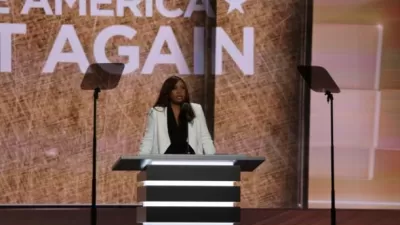HUD announced the winners of the Rebuild by Design competition yesterday, awarding $920 million to six projects in New York and New Jersey. $335 million will go toward the first phase of a 10-mile protective barrier for Manhattan.
"The New York Metropolitan area will soon see a massive, $335 million berm along Manhattan’s Lower East Side, a $60 million living breakwater along Staten Island’s South Shore, a $20 million study of protecting the food distribution center in the Bronx neighborhood of Hunts Point and a $125 million effort to protect north south waterways and the Mill River in Southern Nassau County," reports Graham T. Beck.
HUD also announced winning projects for New Jersey. "For the Garden State, $230 million will go into creating a 'resiliency district' in Hoboken, with the hopes of incentivizing public-private financing for further enhancements to the area, and $150 million will go towards wetland restoration in the Meadowlands."
Laura Kusisto reports more details of the competition's winners, including “The Big U,” designed by Bjarke Ingels Group, which produced designs to "protect the lower half of Manhattan with structures that also serve as recreation sites." That project was awarded the largest share of the competition's funding, $335 million. That award "will go toward building a portion of the first phase of a 10-mile protective barrier on Manhattan's east side."
"The first step will be creating an earthen berm 10 to 20 feet tall that will run along the middle of East River Park and FDR Drive and will connect residents to the river by sloping bridges over the highway." The complete first phase of the project would cost about $1.2 billion.
Graham T. Beck also reports on the expected delivery timelines for the projects: "Their timelines for completion have not been set, but at a press conference today, New York Mayor Bill de Blasio promised the audience that work would begin as soon as possible and continue until the job was done. 'Over four or five years, you’ll see a hugely different physical reality in this city,' he said."
FULL STORY: Massive New Storm-Protection Barrier Funded for Lower Manhattan

Americans May Be Stuck — But Why?
Americans are moving a lot less than they once did, and that is a problem. While Yoni Applebaum, in his highly-publicized article Stuck, gets the reasons badly wrong, it's still important to ask: why are we moving so much less than before?

Study: Maui’s Plan to Convert Vacation Rentals to Long-Term Housing Could Cause Nearly $1 Billion Economic Loss
The plan would reduce visitor accommodation by 25,% resulting in 1,900 jobs lost.

Placekeeping: Setting a New Precedent for City Planners
How a preservation-based approach to redevelopment and urban design can prevent displacement and honor legacy communities.

San Diego Swaps Parking Lane for Kid-Friendly Mini Park
The block-long greenway will feature interactive play equipment and landscaping.

Tracking the Invisible: Methane Leaks From LA’s Neighborhood Oil Sites
Environmental advocates are using infrared technology to monitor and document methane leaks from neighborhood oil sites, filling regulatory gaps and pushing for stronger protections to safeguard community health and the climate.

Montana Bill Promotes Parking Reform
A bill before the Montana state senate would bar cities from requiring more than one parking spot per new housing unit.
Urban Design for Planners 1: Software Tools
This six-course series explores essential urban design concepts using open source software and equips planners with the tools they need to participate fully in the urban design process.
Planning for Universal Design
Learn the tools for implementing Universal Design in planning regulations.
Caltrans
Heyer Gruel & Associates PA
Institute for Housing and Urban Development Studies (IHS)
City of Grandview
Harvard GSD Executive Education
Salt Lake City
NYU Wagner Graduate School of Public Service
City of Cambridge, Maryland



























